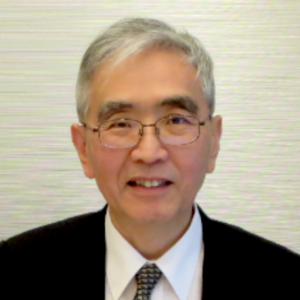Japan controls health care costs with a fee schedule setting prices and billing conditions. The fee schedule is revised biennially to align with policy goals. Annual price cuts for pharmaceuticals and devices create fiscal space for priority areas. This approach could inspire other countries.
Japan contains its health care expenditures through a fee schedule that sets prices and conditions of billing every item listed. Doctor and hospital fees are revised biennially to nudge doctors to deliver services in line with policy goals. The prices of pharmaceuticals and devices are reduced annually and provide the fiscal space to allow small increases in priority areas. The way fees and prices are revised in Japan may provide a model for other countries.
Based on their professional code of ethics to provide the best for their patients, doctors prescribe medication, order tests, decide if and when patients are admitted or discharged from hospitals. These decisions can have an inflationary effect on health care expenditures. Thus, a middle ground must be found between the professional duty to provide the best care for patients and the amount the government budgets for health care. This challenge has led to long waiting lists for publicly funded services which, in turn, has led to the development of privately funded health services. However, Japan has managed to contain health expenditures to the amount the government has budgeted without waiting lists becoming a policy issue.
This has been achieved by applying the government fee schedule to cover not only doctor and hospital services, but also pharmaceuticals and devices.
Every year, pharmaceutical and device prices are lowered. Every two years, Japan revises the fee schedule to contain costs and to nudge doctors to provide services in line with policy goals. For example, to meet the needs of a rapidly aging society (people 65 and over currently comprise 30% of Japan’s population), Japan has introduced new fees such as for providing end-of-life care in the community and for primary care doctors to consult with care managers in long-term care. Although hospital doctors are paid fixed salaries, most aspire to or currently hold senior management positions, including that of hospital director so that they strive to increase revenue and decrease costs.
Revision of the fee schedule
Revising the fee schedule begins with the setting of the global revision rate. This is decided by the prime minister because the rate determines the next fiscal year’s health care expenditures, of which the national government subsidizes one-quarter. This one quarter composes one tenth of the government’s budget. The global revision rate reflects the volume-weighted revision rate of all doctor and hospital fees and prices of all pharmaceuticals for which social health insurance plans reimburse pharmacies and hospitals. Nonprice factors – population aging and COVID-19, for example – also increase expenditures and are factored into the calculation.
The most significant impact on the global revision rate is the extent to which pharmaceutical prices are lowered. Their reductions provide the fiscal space to allow small increases in service fees.
Pharmaceutical prices are decreased by the following process.
Pharmacies and hospitals demand discounts from wholesalers. Pharmaceutical companies agree to discounts to increase sales. The government conducts a survey of the price and volume of sales of each product that is sold by wholesalers to pharmacies and hospitals prior to the revision. Based on the volume-weighted market price of each product, the fee schedule price is lowered. In addition, the fee schedule price of a newly launched product is decreased if its actual sales exceed the amount estimated by the manufacturer. These revisions have led to a downward spiral in the fee schedule prices of pharmaceuticals. Device prices are similarly reduced except that prices are set by functional group, such as stents. This is because device improvement could be a continuing process, which would make it difficult to track their market price.
In parallel with setting the fee schedule’s global revision rate, the health ministry will have discussions with doctor and hospital organizations on revising the fees and conditions of billing fees. The conditions determine the sales volume of each item. The impact of revising the fee for each item on total expenditures is calculated from the number of units reimbursed for such item. These data are available from the government’s claims dataset. In general, if the data show that the volume of sales of an item increased more than the level expected, then the item’s fee would be lowered, and the conditions of billing could be made more restrictive. In making these revisions, the health ministry in Japan discusses the details with provider organizations which may lead to adjusting the fee or conditions of billing the item. While provider organizations would oppose revisions that reduce their revenue, they do not want one group expanding its share of fee reimbursement at another’s expense. They also understand that all item-by-item revisions must be made within the budget cap set by the global revision rate.
In the revision of the fee schedule, the fee and the conditions of billing are of equal importance, hence the conditions are detailed.
For example, to bill a positron emission tomography (PET) scan, a hospital must have trained radiologists and serve as the regional referral centre. These conditions have restricted the number of PET scans. Whereas when computed tomography (CT) scans were listed, the conditions of billing were not rigorously set. The relative high fees led to increases in their number. However, fees have subsequently been lowered for low image density CT scans, forcing manufacturers to lower the price of purchasing or leasing this type of scan. In primary care, fees have been increased and the conditions of billing refined for delivering end-of-life care at home.
Revisions are also made of hospital fees. The focus has been on ratios of nurse staffing to beds, with the fees staggered based on the ratio. Hospitals with higher nurse-to-bed ratios are paid higher fees. The staggered rate was introduced in response to reforms made by occupying forces after the Second World War. Before the reforms, nurses were focused on assisting doctors while families bore the responsibility of patient care. Providers differ on this issue. The Japan Medical Association, representing the interests of smaller hospitals owned by doctors, which face difficulties in recruiting nurses, has opposed the payment of higher fees to hospitals with higher nurse-to-bed ratios while the Japanese Nursing Association has successfully lobbied for expanding higher fees for hospitals that have higher nurse-to-bed ratios.
Adherence to the conditions of billing
The conditions of billing and monitoring of compliance are critical aspects of Japan’s health care system as they control the volume of each item. Compliance is reviewed in three steps:
- Peer review of the claims. At the end of each calendar month, providers submit their claims to the regional office of the social health insurance plans. Claims are processed and checked for administrative errors, then inspected by a panel of local doctors who are paid to review the claims in their respective specialty. The panel denies payment if services delivered do not meet the conditions of billing set in the fee schedule. Providers may contest the panel’s decision. Although less than 1% of claims billed are denied full payment, the review has had a signal effect on providers.
- On-site inspections by the medical officer of the health ministry’s regional office, every three to eight years. Facilities that had problems in the previous inspection receive more frequent visits. The medical officer requests medical records of the patients corresponding to about 50 claims filed by the facility – clinic or hospital, which the medical officer selects for inspection. If inspection reveals the conditions of billing were not met for any of the items, the provider must review all claims filed in the prior six months and return the entire reimbursed amount of the claims in which an item has been inappropriately billed. For example, to bill the fee for providing instructions to patients with diabetes on lifestyle changes, the medical records must show not only the instructions but also the patients’ reaction to them. If the billed amount returned by the provider is less than expected, a representative of the regional office will inspect all the relevant medical records more strictly.
- Audit. If an on-site visit reveals intentional falsifications of claims, the on-site inspection becomes an audit. Based on the audit, relevant doctors and facilities may be delisted from the approved list of social health insurance providers. This would lead to closure of the facility or to the doctor being disallowed to deliver services under social health insurance, or both.
This multistep process is relatively inexpensive to maintain, with costs that amount to less than 1% of the total amount billed. These costs do not include the cost to providers for filing the claim and responding to the decisions made in the review process.
Impact of the fee schedule
The impact of the fee schedule has been threefold.
- Health expenditures have been relatively contained without waiting lists becoming a policy issue. According to the Organisation for Economic Co-operation and Development (OECD) health data (2024), Japan has the third-lowest proportion of total health expenditures to GDP among the G7 countries while it once had the lowest. This rise reflects the Japan’s aging population, with the highest ratio of people 65 and over to total population among G7 countries, and Japan having a generously funded long-term care insurance (LTCI) since its implementation in 2000. LTCI expenditures, except for expenditures to support the instrumental activities of daily living, such as preparing meals, are included in the OECD’s total health expenditures. Japanese government data show that LTCI expenditures as a proportion of health expenditures have increased from one tenth in 2000 to nearly one quarter in 2020.
- The reductions of pharmaceutical prices at which social health insurance reimburses pharmacies and hospitals have been key in containing costs. Pharmaceutical companies have been willing to give discounts to wholesalers to increase sales. This is a rare example of competition working in health care. The savings achieved from these reductions provide fiscal space to finance new technology and list new fees in priority areas such as end-of-life care in the community.
- The biennial revisions of the fee schedule enable the government to respond to new needs. If the revision of the fee and of the conditions of billing do not lead to the desired outcome, then both the fee and the conditions of billing can be revised in the next fee schedule revision. This, together with the dominant role of the private sector in delivering services, may in part explain why waiting lists have not been an issue in Japan. Private health insurance does exist, but its benefits are focused on providing cash benefits to cover incidental costs of hospitalization.
The way providers are paid in Japan may provide a model for high-income countries that have growing waiting lists and increasing enrolment in private health insurance. Japan’s approach could also serve as an alternative for middle-income countries to the British National Health Service model. The key issue is to restructure the payment scheme so that doctors and hospitals are paid according to the prices and conditions of billing set in the fee schedule. While this approach may be opposed on ideological and practical grounds, Japan’s approach shows how funding to increase fees in primary care could be found by lowering pharmaceutical prices based on the volume-weighted prices at which pharmacies and hospitals buy from wholesalers. Payment reform is a continuous process that requires vigilance to check how the reform affects the behaviour of doctors and hospitals.
The author would like to acknowledge and thank Kalipso Chalkidou, Hélène Barroy, Fahdi Dkhimi, Alexis Bigeard and Claude Meyer of the World Health Organization for their valuable comments.
 Naoki Ikegami is Professor Emeritus at Keio University, Tokyo. He was Chair of the Department of Health Policy and Management at the Keio School of Medicine, from which he received his MD and PhD. He also received a Master of Arts with Distinction in health services studies from Leeds University (United Kingdom). He has been a visiting professor at the University of Pennsylvania’s Wharton School and Medical School, and President of the Japan Society of Healthcare Administration and the Japan Health Economics Association.
Naoki Ikegami is Professor Emeritus at Keio University, Tokyo. He was Chair of the Department of Health Policy and Management at the Keio School of Medicine, from which he received his MD and PhD. He also received a Master of Arts with Distinction in health services studies from Leeds University (United Kingdom). He has been a visiting professor at the University of Pennsylvania’s Wharton School and Medical School, and President of the Japan Society of Healthcare Administration and the Japan Health Economics Association.Further reading
Ikegami, Naoki, ed. Universal Coverage for Inclusive and Sustainable Development: Lessons from Japan. World Bank Study. Washington, DC: International Bank for Reconstruction and Development / The World Bank, 2014.
Ikegami, Naoki. “Fee-for-Service Payment – An Evil Practice That Must Be Stamped Out?” International Journal of Health Policy and Management 4, no. 2 (2015): 57-59.


